A small group, no participation lodge safari with all nights in lodges / permanent tented camps. The tour starts and ends in Nairobi and includes almost all of the major highlights of Tanzania and Kenya.
Departs: Nairobi, Tanzania.
Ends: Nairobi, Tanzania.
Group size: Guaranteed from 4 guests; 12 guests maximum. *Guaranteed departures with no minimum pax available, please enquire.
Summary
Fully Accommodated Safari from and to Nairobi.
The Migration
Seeing the wildebeest (gnu) migration in East Africa is one of the most spectacular wildlife sightings in the world. Almost 2 million animals roam the plains of East Africa, but it can be surprisingly hard to find them in the vast area that they cover, as their movements are governed by the rains and predicting their location can be a gamble. We designed this itinerary to include all the areas frequented by the migration on their annual route – this virtually guarantees that you will see them!
A brief outline of the migration movements:
• From December to April the migration spreads out over the Southern Plains of the Serengeti. Depending on the rains they move from the Gol Kopjes in the East to the Moru Kopjes in the west. This area is easily accessible from the centrally located Seronera. (We stay in the Kisura Kenzan Tented Camp.)
• Between May and August the migration slowly moves through the western corridor and into the Ikoma and Grumeti Wildlife Management Areas. These areas are outside of the Serengeti, but as there are no fences the wildlife can, and do, move around freely.
• From September to end of November, during the short rains, the migration crosses into the Masai Mara in Kenya. This is a relatively small park compared to the vast Serengeti and the wildlife tends to be very concentrated. (We stay at the Mara Eden Safari Camp to take advantage of its proximity to the migration and not to mention its own private entrance gate to the park.)
Highlights
Lake Manyara National Park, Village tour with traditional lunch, Centre for disabled kids, School visit, Masai Boma visit at Mto wa Mbu, Tarangire National Park, Ngorongoro Crater, Serengeti National Park, Lake Victoria boat excursion, Masai Mara,Karen Blixen (Out of Africa) Museum, Sheldrick Elephant Orphanage, Amboseli National Park.
Meals
Breakfast and dinner will be prepared by the lodge where you are staying. They will also prepare lunch or a lunch pack depending on the itinerary for the day. Please advise us of any special dietary requirements in advance.
SAFARI
COST: $3,890 per person sharing.
SINGLE SUPPLEMENT: $880
PARK FEES PAYMENT: $1,005
Park fees are subject to increase at any time without notice. |
CLICK TO SEE DEPARTURE DATES
|
|
DAY 1;
(1 Night)
NAIROBI, Kenya [Hotel] |
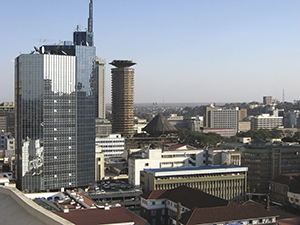 On your arrival at the Jomo Kenyatta International Airport, you will be met, thereafter transferred to your city hotel for relaxation and overnight. On your arrival at the Jomo Kenyatta International Airport, you will be met, thereafter transferred to your city hotel for relaxation and overnight.
|
Overnight: Eka Hotel or similar.
Meals: Dinner At Eka Hotel or similar.
Distance: 20 km
Driving time: 30 min (traffic dependent)
|
DAY 2;
(1 Night)
NAIROBI - AMBOSELI NATIONAL PARK, Kenya [Lodge] |
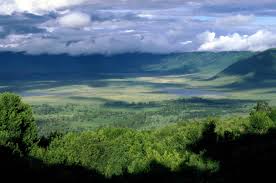 After breakfast, we explore Nairobi with a visit to the Karen Blixen Museum. The museum is the beautiful and historic farmhouse where Karen Blixen, author of “Out of Africa”, lived between 1917 and 1931 until she left Kenya after a series of personal tragedies. Thereafter, we head to the Giraffe Centre and the Daphne Sheldrick Animal Orphanage for a visit. The institution is named after the wife of the late famous Naturalist, David William Sheldrick who was the founder warden of Tsavo East National Park in Kenya from its inception in 1948 to 1976. At 11:00, the baby animals are brought from the national park for a mud-bath at the orphanage, where for an hour you can get close to them and sometimes touch them. Lunch will follow before driving down to Amboseli National Reserve, arriving in the afternoon. After breakfast, we explore Nairobi with a visit to the Karen Blixen Museum. The museum is the beautiful and historic farmhouse where Karen Blixen, author of “Out of Africa”, lived between 1917 and 1931 until she left Kenya after a series of personal tragedies. Thereafter, we head to the Giraffe Centre and the Daphne Sheldrick Animal Orphanage for a visit. The institution is named after the wife of the late famous Naturalist, David William Sheldrick who was the founder warden of Tsavo East National Park in Kenya from its inception in 1948 to 1976. At 11:00, the baby animals are brought from the national park for a mud-bath at the orphanage, where for an hour you can get close to them and sometimes touch them. Lunch will follow before driving down to Amboseli National Reserve, arriving in the afternoon.
|
Overnight: Kibo Safari Camp or similar.
Meals: Breakfast at Eka Hotel; Picnic lunch from Eka Hotel; Dinner at Kibo Safari Camp.
Distance: 240 km
Driving time: 4-5 hours |
DAY 3;
(1 Night)
AMBOSELI NATIONAL PARK, Kenya [Lodge] |
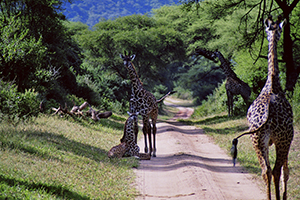 Today we will head into the Amboseli National Park for a full day of game viewing in one of Kenya’s most famous parks. Amboseli is known for its huge elephant bulls with their magnificent tusks, which make for the ultimate safari picture with the snow-capped Mount Kilimanjaro in the background. Today we will head into the Amboseli National Park for a full day of game viewing in one of Kenya’s most famous parks. Amboseli is known for its huge elephant bulls with their magnificent tusks, which make for the ultimate safari picture with the snow-capped Mount Kilimanjaro in the background.
|
Overnight: Kibo Safari Camp or similar.
Meals: Breakfast at Kibo Safari Camp; Picnic lunch from Kibo Safari Camp; Dinner at Kibo Safari Camp. |
DAY 4;
(1 Night)
AMBOSELI, Kenya - ARUSHA, Tanzania [Lodge] |
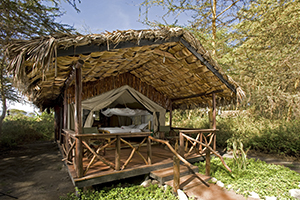 This morning after a leisurely breakfast, we make our way to the border and then onwards to Arusha. En route, we pass the Marangu waterfalls – which is a moderately strenuous walk (we do recommend sturdy shoes and a degree of walking fitness). We continue to Arusha via Moshi town – the gateway to the Kilimanjaro National Park. This morning after a leisurely breakfast, we make our way to the border and then onwards to Arusha. En route, we pass the Marangu waterfalls – which is a moderately strenuous walk (we do recommend sturdy shoes and a degree of walking fitness). We continue to Arusha via Moshi town – the gateway to the Kilimanjaro National Park.
|
Overnight: Moivaro Coffee Plantation Lodge or similar.
Meals: Breakfast at Kibo Safari Camp; Picnic lunch from Kibo Safari Camp; Dinner at Moivaro Coffee Plantation Lodge.
Distance: 210 km
Driving time: 4-5 hours (border crossing dependent) |
DAY 5;
(1 Night)
ARUSHA - MANYARA NATIONAL PARK - LAKE MANYARA, Tanzania [Lodge] |
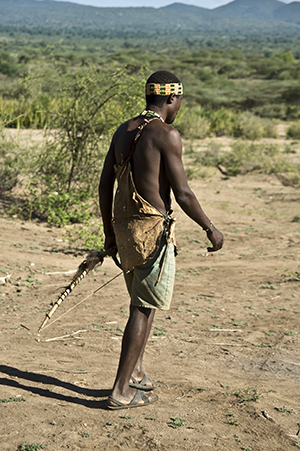 After breakfast, you will get picked up from your hotel and set off towards Lake Manyara National Park. Manyara NP is not only known for its large flocks of flamingos, but also for the elusive tree climbing lions. After breakfast, you will get picked up from your hotel and set off towards Lake Manyara National Park. Manyara NP is not only known for its large flocks of flamingos, but also for the elusive tree climbing lions.
|
Overnight: Rift Valley Photographic Lodge or similar.
Meals: Breakfast at Moivaro Coffee Plantation Lodge; Picnic lunch from Moivaro Coffee Plantation Lodge; Dinner at Rift Valley Photographic Lodge.
Distance: 130 km
Driving time: 2-3 hours |
DAY 6;
(1 Night)
CULTURE TOUR - LAKE MANYARA, Tanzania [Lodge] |
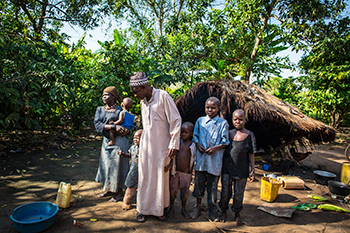 After breakfast, we set out to experience the cultural diversity of Mto-wa-Mbu, starting at the market and visiting a Chagga family producing banana beer and passing by many different farms. On the way, your guide will introduce you to the various fruits and vegetables growing in the area and explain the irrigation system that sustains local crops. After having a delicious, home-cooked meal in a local Mama’s home, we visit the nearby centre for disabled kids and school. Late afternoon we enjoy a visit to the Maasai Boma for the cultural encounter of a life time. The Maasai people are semi-nomadic herders, who choose to live a traditional lifestyle and are known for their distinctive traditional attire. On completion we return to the lodge for dinner & overnight. After breakfast, we set out to experience the cultural diversity of Mto-wa-Mbu, starting at the market and visiting a Chagga family producing banana beer and passing by many different farms. On the way, your guide will introduce you to the various fruits and vegetables growing in the area and explain the irrigation system that sustains local crops. After having a delicious, home-cooked meal in a local Mama’s home, we visit the nearby centre for disabled kids and school. Late afternoon we enjoy a visit to the Maasai Boma for the cultural encounter of a life time. The Maasai people are semi-nomadic herders, who choose to live a traditional lifestyle and are known for their distinctive traditional attire. On completion we return to the lodge for dinner & overnight.
|
Overnight: Rift Valley Photographic Lodge or similar.
Meals: Breakfast at Rift Valley Photographic Lodge; Lunch at a local Mama's house; Dinner at Rift Valley Photographic Lodge. |
DAY 7;
(1 Night)
TARANGIRE NATIONAL PARK, Tanzania [Lodge] |
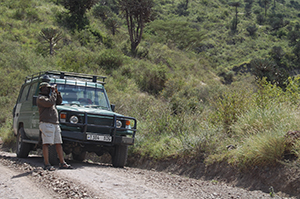 Today we set out to Tarangire National Park for a full day’s game drives. The breath-taking views of the Maasai Steppe, and the mountains to the south, make a stop at Tarangire a truly memorable experience. Tarangire is as well known for its huge elephant population and baobab trees. It forms the centre of an annual migratory cycle that includes up to 3000 elephant, 25,000 wildebeest and 30,000 zebra. Today we set out to Tarangire National Park for a full day’s game drives. The breath-taking views of the Maasai Steppe, and the mountains to the south, make a stop at Tarangire a truly memorable experience. Tarangire is as well known for its huge elephant population and baobab trees. It forms the centre of an annual migratory cycle that includes up to 3000 elephant, 25,000 wildebeest and 30,000 zebra.
|
Overnight: Rift Valley Photographic Lodge or similar.
Meals: Breakfast at Rift Valley Photographic Lodge; Picnic lunch from Rift Valley Photographic Lodge; Dinner at Rift Valley Photographic Lodge.
Distance: 130 km
Driving time: 2-3 hours
|
DAY 8;
(1 Night)
MANYARA - NGORONGORO - SERENGETI NATIONAL PARK, Tanzania [Tented Camp] |
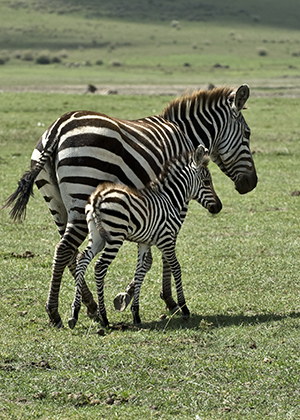 This morning we have an early departure for a game drive in the world renowned Ngorongoro Crater. For many, this wildlife spectacle is the pinnacle of their safari experience. The Ngorongoro Crater boasts all of the ‘Big 5’, including a small population of endangered black rhino. After a picnic lunch, we head towards the Serengeti through the stunning Southern Plains. This is the area that the Serengeti is best known for – the endless, undulating grass savannah with rocky outcrops that serve as isolated wildlife refuges. This morning we have an early departure for a game drive in the world renowned Ngorongoro Crater. For many, this wildlife spectacle is the pinnacle of their safari experience. The Ngorongoro Crater boasts all of the ‘Big 5’, including a small population of endangered black rhino. After a picnic lunch, we head towards the Serengeti through the stunning Southern Plains. This is the area that the Serengeti is best known for – the endless, undulating grass savannah with rocky outcrops that serve as isolated wildlife refuges.
|
Overnight: Kisura Kenzan Tented Camp or similar.
Meals: Breakfast at Rift Valley Photographic Lodge; Picnic lunch from Rift Valley Photographic Lodge; Dinner at Kisura Kenzan Tented Camp.
Distance: 400 km (including the Crater)
Driving time: 6-7 hours (mostly at game drive speeds)
|
DAY 9;
(1 Night)
SERENGETI NATIONAL PARK (SERONERA), Tanzania [Tented Camp] |
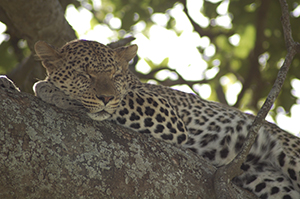 Today you will be spending a full day game driving around the Seronera area of the Serengeti. The Serengeti is divided into three main areas: Seronera is the most central and accessible region and this is where the Park HQ is based, as well as most of the larger lodges and communal campsites. This part of the Serengeti is characterised by open plains of grassland, packed with animals. The Seronera River is the lifeblood of the Serengeti and this area is renowned for great game viewing all year round. It is also particularly good for lion and cheetah sightings, as well as the most elusive of all big cats, the leopard. Today you will be spending a full day game driving around the Seronera area of the Serengeti. The Serengeti is divided into three main areas: Seronera is the most central and accessible region and this is where the Park HQ is based, as well as most of the larger lodges and communal campsites. This part of the Serengeti is characterised by open plains of grassland, packed with animals. The Seronera River is the lifeblood of the Serengeti and this area is renowned for great game viewing all year round. It is also particularly good for lion and cheetah sightings, as well as the most elusive of all big cats, the leopard.
|
Overnight: Kisura Kenzan Tented Camp or similar.
Meals: Breakfast at Kisura Kenzan Tented Camp; Picnic lunch from Kisura Kenzan Tented Camp; Dinner at Kisura Kenzan Tented Camp.
|
DAY 10;
(1 Night)
SERENGETI NATIONAL PARK (SERONERA), Tanzania [Tented Camp] |
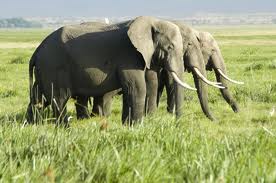 We have another exciting day of exploring the Serengeti National Park ahead of us. With lunch boxes provided we continue with game drives throughout the afternoon, scanning the endless plains, spotting many animals and truly realizing just why this national park is so famous. In the late afternoon we drive back to the lodge for overnight. We have another exciting day of exploring the Serengeti National Park ahead of us. With lunch boxes provided we continue with game drives throughout the afternoon, scanning the endless plains, spotting many animals and truly realizing just why this national park is so famous. In the late afternoon we drive back to the lodge for overnight.
|
Overnight: Kisura Kenzan Tented Camp or similar.
Meals: Breakfast at Kisura Kenzan Tented Camp; Picnic lunch from Kisura Kenzan Tented Camp; Dinner at Kisura Kenzan Tented Camp.
|
DAY 11;
(1 Night)
SERENGETI NATIONAL PARK - LAKE VICTORIA, Tanzania [Lodge] |
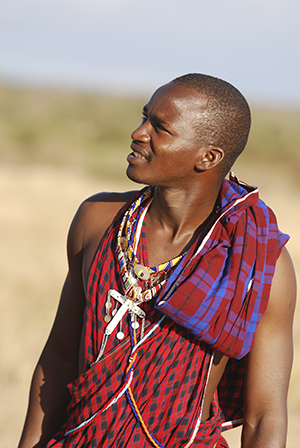 After breakfast we make our way to Lake Victoria. We pass through the villages of the Sukuma tribe, who grow ground nuts, sorghum and cassava as well as keeping livestock. Life carries on here simply as it has done for ages, but with a few poignant reminders of the 20th century. Some leisure time in the afternoon, or to possibly take a bird walk along the lake shore. After breakfast we make our way to Lake Victoria. We pass through the villages of the Sukuma tribe, who grow ground nuts, sorghum and cassava as well as keeping livestock. Life carries on here simply as it has done for ages, but with a few poignant reminders of the 20th century. Some leisure time in the afternoon, or to possibly take a bird walk along the lake shore.
|
Overnight: Speke Bay Lodge or similar.
Meals: Breakfast at Kisura Kenzan Tented Camp; Picnic lunch from Kisura Kenzan Tented Camp; Dinner at Speke Bay Lodge.
Distance: 250 km
Driving time: 4-5 hours (including game drive speeds)
|
DAY 12;
(1 Night)
LAKE VICTORIA, Tanzania - MASAI MARA NATIONAL PARK, Kenya [Tented Camp] |
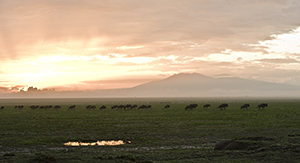 This morning you have the opportunity to take part in a boat excursion to one of the local fishing villages, before we bid Lake Victoria farewell and continue our journey northwards across the border into Kenya. Here we head to the Masai Mara, the traditional land of the Maasai people, who are permitted to graze their cattle in this area. The Masai Mara covers an area that includes the riverine forests along the banks of the Mara and Talek Rivers, acacia forests and the open plains of the savannah. This morning you have the opportunity to take part in a boat excursion to one of the local fishing villages, before we bid Lake Victoria farewell and continue our journey northwards across the border into Kenya. Here we head to the Masai Mara, the traditional land of the Maasai people, who are permitted to graze their cattle in this area. The Masai Mara covers an area that includes the riverine forests along the banks of the Mara and Talek Rivers, acacia forests and the open plains of the savannah.
|
Overnight: Mara Eden Tented Camp or similar.
Meals: Breakfast at Speke Bay Lodge; Picnic lunch from Speke Bay Lodge; Dinner at Mara Eden Tented Camp.
Distance: 270 km
Driving time: 6-8 hours (border crossing dependent)
|
DAY 13;
(1 Night)
MASAI MARA NATIONAL PARK, Kenya [Tented Camp] |
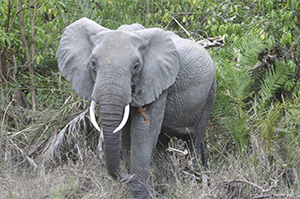 Today we spend the whole day game viewing in the world famous Masai Mara National Park. Here the various habitats are home to a great variety of game including lion, leopard, cheetah, zebra, wildebeest (gnu), giraffe, buffalo, jackal, topi, gazelle, impala and elephant. Hippopotamus and crocodile are also plentiful in the rivers and the bird life is very abundant. Today we spend the whole day game viewing in the world famous Masai Mara National Park. Here the various habitats are home to a great variety of game including lion, leopard, cheetah, zebra, wildebeest (gnu), giraffe, buffalo, jackal, topi, gazelle, impala and elephant. Hippopotamus and crocodile are also plentiful in the rivers and the bird life is very abundant.
|
Overnight: Mara Eden Tented Camp or similar.
Meals: Breakfast at Mara Eden Tented Camp; Picnic lunch from Mara Eden Tented Camp; Dinner at Mara Eden Tented Camp.
|
DAY 14;
(1 Night)
MASAI MARA - NAIROBI, Kenya [Hotel] |
 After breakfast we head off towards Nairobi, the capital city of Kenya. We have the afternoon at leisure or to explore the city. Time allowing, we visit the Kazuri Beads Centre and workshop for those interested in shopping. Kazuri means "small and beautiful" in Swahili and it describes each striking ceramic bead which is shaped by hand by the women employed at the Kazuri workshop. Nairobi is a cosmopolitan, lively and interesting city. Its central business district is nicely compact and it is therefore a great place to tune into modern urban African life. Later in the afternoon, we head to the hotel for dinner and overnight. After breakfast we head off towards Nairobi, the capital city of Kenya. We have the afternoon at leisure or to explore the city. Time allowing, we visit the Kazuri Beads Centre and workshop for those interested in shopping. Kazuri means "small and beautiful" in Swahili and it describes each striking ceramic bead which is shaped by hand by the women employed at the Kazuri workshop. Nairobi is a cosmopolitan, lively and interesting city. Its central business district is nicely compact and it is therefore a great place to tune into modern urban African life. Later in the afternoon, we head to the hotel for dinner and overnight.
|
Overnight: Eka Hotel or similar.
Meals: Breakfast at Mara Eden Tented Camp; Picnic lunch from Mara Eden Tented Camp; Dinner at the Eka Hotel.
Distance: 280 km
Driving time: 5-6 hours
|
DAY 15; NAIROBI, KENYA [TOUR ENDS] |
The tour ends after breakfast this morning and you will be transferred to the airport for your outbound flight. |
Overnight: N/A
Meals: Breakfast at Eka Hotel.
|
Note: The accommodation specified in the itinerary is a guide only and is subject to availability. Alternatives will be nearby and of a similar standard.
 Top Top
CLICK TO SEE DEPARTURE DATES
Included
Fourteen (14) Nights Lodge / Tented Camp accommodation, all transport in a suitable 4x4 vehicle with a pop up roof for exceptional game viewing and photography, game drives as mentioned, meals and activities as mentioned in itinerary, park entrance fees (quoted separately as above), and an experienced professional guide.
Excluded
Travel insurance, flights and taxes, pre and post tour accommodation, optional activities, all drinks, visa fees, health requirements, telephone calls, gratuities, curios and all personal expenses.
Departure
The Migration Discoverer Safari departs from the Eka Hotel in Nairobi. When arriving in Nairobi on day one, you will be picked up from the airport and transferred to your lodge. Should you arrive prior to day one, pre-tour accommodation can be arranged and you will be picked up from your hotel on the morning of day.
In the evening of first day of your safari, there will be a pre-departure meeting presented by your guide at your accommodation. It is imperative that all clients attend this meeting so as not to miss out on any critical information.
Whilst it is our every intention to adhere to the above mentioned itinerary, there may on occasion be a necessity to make alterations in order to make the tour more enjoyable or practical. Therefore please treat the itinerary as a guide only.
Transport
We use fully equipped customized 12-seater 4x4 safari vehicles, Toyota Land Cruisers or other appropriate vehicles with comfortable seating, large windows for game viewing and a music system. The vehicles are fully air-conditioned and equipped with pop-up roofs to facilitate the best game viewing. All luggage, besides hand luggage and photo equipment, is carried on the vehicle roof rack or trailer to ensure maximum comfort in the vehicle.
Travelling Times and Distances
All travelling times are affected by road conditions, border crossings, detours and weather conditions, therefore on certain days travelling times may be longer than anticipated especially where there is a lot of distance to be covered. Please keep in mind that the time it takes to travel 100 km in your home country is not equivalent to the time it takes to travel 100 km on African roads, therefore we encourage you to sit back and enjoy the spectacular scenery Africa has to offer. Where possible additional stops will be made to ensure your travelling comfort at all times.
Accommodation
For this fully accommodated lodge safari, we make use of typical, mid-range African standard lodge accommodation. Accommodation is situated either in national parks, on the banks of a river, or in other places of interest. The accommodation will be a mix of lodges, chalets and tented camps, all with en-suite facilities. Some properties are equipped with swimming pools and/or bar areas.
Spending Money
Clients are advised to bring enough money to cover the purchase of curios, tips for the guide and any additional entertainment. US Dollars, Tanzanian Shilling and Kenyan Shilling are the most practical and convenient currencies.
Meals
Breakfast and dinner will be prepared by the lodge where you are staying. They will also prepare lunch or a lunch pack depending on the itinerary for the day. Please advise us of any special dietary requirements in advance.
First Aid
Our guides are trained in basic first aid and the vehicle is equipped with a medical aid kit. Preventative Malaria medication should be taken before the trip and throughout its duration and it is advisable to consult a doctor prior to departure. Yellow Fever vaccinations are compulsory, and your yellow fever certificate should be presented on arrival – please contact your Travel Clinic before departure.
Luggage
Maximum baggage allowance: 12 kg. We stipulate this luggage allowance, as an overloaded vehicle is a danger to both the clients and the guide. This does not include photographic equipment and a small daypack. Please bring soft-sided luggage (e.g. a backpack or soft barrel bag), not a suitcase. Don't bring too much clothing, as there are washing opportunities along the way. Please adhere to the allowance specified as space for luggage is limited.
Participation
The Migration Discoverer is a non-participation safari.
Visas
The onus is on the client to organize all visas required for a visit to Tanzania and Kenya prior to departure.
Information on Areas Visited
TANZANIA
A land of plains, lakes and mountains, with a narrow, low-lying coastal belt, Tanzania is East Africa's largest country and also one of its most diverse. Tanzania is home for more than 100 different ethnic groups, mostly of Bantu origin, each with its own language and customs.
Tanzania has one of the largest and wildest animal populations in the world. Wildebeest, monkey, antelope, lion, cheetah, crocodile, gazelle, and flamingo - you name them. Blessed with some of the world's largest game reserves, the country also has one of the highest concentrations of elephant, buffalo, hippo, wild dog and chimpanzee.
Its spectacular topography includes The Great Rift Valley, Mt Kilimanjaro and famous parks such as the Serengeti and the wonderful Ngorongoro Crater.
Offshore are idyllic islands with beautiful palm-fringed beaches and turquoise seas that surround pristine coral reefs. The archaeological treasures of Tanzania include hominid fossils, which are more than 300 million years old. Tanzanian music and dance dominates much of East Africa. Strong in rhythm and renowned for hard-hitting lyrics, the country's Swahili-based sounds are kept very much alive by a thriving dance-band scene. Nyama choma (barbecued meat) has taken over in a big way, especially in restaurants with attached bars. But on the coast, on Zanzibar and Pemba islands, there's a decent range of traditional Swahili dishes based on seafood.
Recorded history begins around 1800, when the Masai warrior tribes were migrating from Kenya to Tanzania. It wasn't until the middle of the 18th century that Arab traders and slaves dared venture into Masai territory in the country's wild interior. European explorers began arriving in earnest in the mid-19th century, the most famous being Stanley and Livingstone. The famous phrase 'Dr Livingstone, I presume', stems from the duo's meeting at Ujiji on Lake Tanganyika. Tanganyika won independence in 1961 with Julius Nyerere as the country's first president. Nyerere, whose secret ingredient was radical socialism, gained widespread respect and is seen as one of the most influential leaders Africa has ever had. Zanzibar was stuck for another two years, after which the mainland forged a union comprising Zanzibar and the nearby island of Pemba. Thus Tanzania was born.
There is a wide range of optional activities to make your experience in Tanzania absolutely unforgettable. Some great views can be experienced while floating in a hot-air balloon over the Serengeti. While swimming with dolphins is all the rage on the island of Zanzibar. Snorkeling and scuba diving is equally popular due to the world-class coral reefs off nearby Pemba and Mafia islands.
Tarangire National Park
The Tarangire National Park covers 2,600km² and habits the highest concentration of wildlife outside the Serengeti ecosystem. Here, you can watch huge herds of wildebeest, eland, zebra, buffalo, impala, gazelle and elephant moving through the undulating countryside and taking a rest under a vast number of baobab trees, or drinking at the lagoons and the rivers. Remember not to just look on the ground though, but have a look at the branches of the trees for lion, leopard and pythons or the amazing 550 bird species also found in this area.
Lake Manyara National Park
Lake Manyara National Park sits at the base of the Great Rift Valley escarpment and is one of the most scenic parks in Tanzania. There are stunning views of the park from every direction. From the east, the Rift Valley escarpment emerges on the horizon with the lake forming a glistening background. On the southern side of the park, you will find the hot springs of Maji Moto, which are about 60ºC. At the top of the escarpment from the west, the park stretches across a ribbon of green with the lake shining in the sun. Like most Rift Valley lakes, the water is alkaline. This attracts vast flocks of flamingos, which form pink foam against a silver background of water. Altogether, this area offers beautiful views as you take in the massive lake with its silver shimmer and surrounding vegetation. The major landmark is the spectacular rift wall, where the plains give way to cultivated uplands of Mbululand. Measuring only 330km2 (of which the lake occupies 230km2) and located only 130km from Arusha, this park often gets day visitors, who come to enjoy the endless views and variety of mammals, reptiles and birds, as well as the varied vegetation, flora and fauna. Animals found in the area include zebra, elephant, hippo, monkey, wildebeest (gnu), waterbuck, warthog, gazelle, impala, buffalo, warthog, hyena, baboon and giraffe. Manyara is also known for its tree-climbing lions. These majestic animals find shelter fromthe heat and biting flies in the branches of trees and can easily kill buffalo, which is far greater in weight and size. There are also over 350 species of bird life, with a variety of local species inhabiting the forest and bush, including pelicans that waddle around next to short grasses on the shore of the lake.
Ngorongoro Conservation Area
Being one of the largest calderas in the world, 20 km (12.4 miles)-wide, 600 m (1.968ft) tall, with a variety of animals and vegetation, Ngorongoro Crater is one of Tanzania's most visited areas. The vegetation includes grasslands, swamps, forests, salt-pans, as well as a freshwater lake and has been compared to Noah's Ark or the Garden of Eden.
You will have no trouble finding lion, elephant, rhino, buffalo and many of the plains herbivores such as wildebeest (gnu), Thomson's gazelle, zebra and reedbuck, as well as thousands of flamingo wading in the shallows of Lake Magadi, the soda lake on the floor of the crater. Within the steep walls of the crater you will find considerable movement of animals and you may well come across local Masai tribesmen (who have grazing rights here), tending their cattle.
Serengeti National Park
Serengeti, which sprawls across 14.763 km2 (5.757 miles2), is Tanzania's largest and most famous national park. The chief herbivore of Serengeti is the wildebeest (gnu) of which there are up to two million. The amazing annual migration of wildebeest herds is one of the biggest attractions of the Serengeti. It begins at the Serengeti National Park near the Kenyan border, when huge herds of these animals, head for greener pastures in Kenya. Starting in April each year, they migrate across the Serengeti's southern plains accompanied by zebra, antelope, gazelle, lion and tourists! The park is also famous for its lions, which can be tracked due to the fact that many have collars fitted with transmitters, as well as cheetah and large herds of giraffe.
KENYA
Revered by anthropologists as the 'cradle of humanity', Kenya has the globe's most magnificent wildlife parks, unsullied beaches, thriving coral reefs, memorable mountain escarpments and ancient Swahili cities. The Swahili word safari (which literally means "journey") wouldn't mean much to most people if it wasn't for this East African adventure land, which is known for the annual mass migration of wildebeest in the Masai Mara! Kenya is a country in eastern Africa, bordering Ethiopia, Somalia, Sudan, Tanzania, Uganda and the Indian Ocean. Nairobi is its capital and largest city. The history dates back many centuries from the internal diasporas, to the early settlements and migrations. After that came the formation of the various language groups who developed their own religions, traditions, governments and ruling systems, in which they dictated their way of life and how they managed to keep alive by their trade and occupations. After this the white colonials arrived. This was followed by the fight for liberation, which gave birth to the Mau Mau freedom fighters and the rise of the Kenyan heroes.
Masai Mara
Although not Kenya's largest park, the Masai Mara, as the Kenyans call it, is undoubtedly its best known and contains great concentrations of wildlife. Covering an area in excess of 1.800 km2 (almost 700 miles2), it was established in 1961 and adjoins the Serengeti in Tanzania, forming the northern end of the great migration ecosystem. This is the traditional land of the Masai people, nomadic herders who choose a traditional lifestyle and who are permitted to graze their cattle in the area. The park's habitats include the forests along the banks of the Mara and Talek Rivers, acacia forests and open savannah. These various habitats are home to a great variety of game including lion, leopard, cheetah, zebra, wildebeest (gnu), giraffe, buffalo, jackal, topi, gazelle, impala and elephant. Hippopotamus and crocodile are plentiful in the rivers and the bird life is also abundant. No less than 53 different species of birds of prey alone have been recorded. You may see the annual migration as hundreds of thousands of wildebeest and zebra move through this area in search of fresh grass. The perilous crossing of the Mara River, undertaken by hordes of beasts is truly dramatic and an obvious highlight.
Amboseli National Reserve
With a perfect view of a snow-capped Mount Kilimanjaro in the distance, Amboseli National Reserve is one of the top destinations for a safari in Kenya. Although this is one of the smaller Kenyan game parks at only 390 km2, it supports a wide range of mammals (well over 50 of the larger species, and over 400 species of birds), as well as providing the best opportunity to see the critically endangered black rhino.
Animals are relatively easy to see and with an estimated 650 elephants (the largest number in all Kenyan parks and reserves per km2), as well as hippopotamus in the swamps and springs, the obvious lion, leopard, cheetah, jackal, hyena, buffalo, giraffe and plains game, you are almost guaranteed a fantastic game viewing and park experience.
 Top Top
Please contact us for dates.
 Top Top  Return to Value Safari Packages Return to Value Safari Packages
|